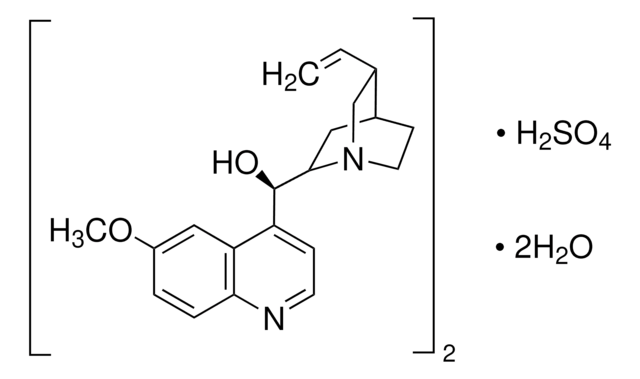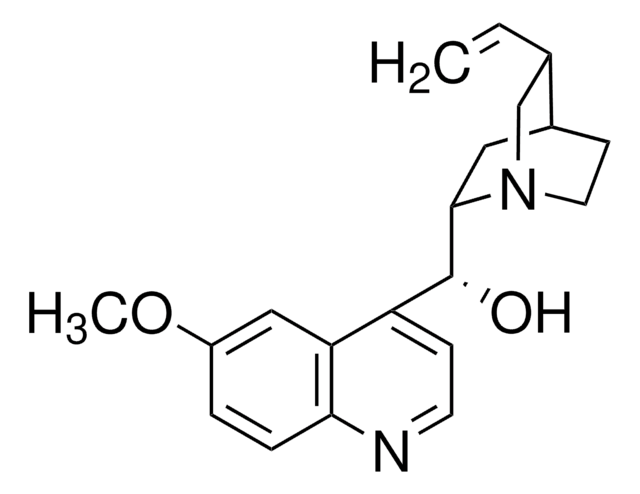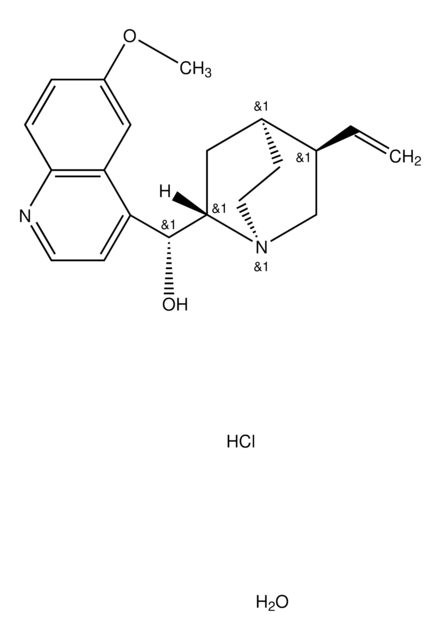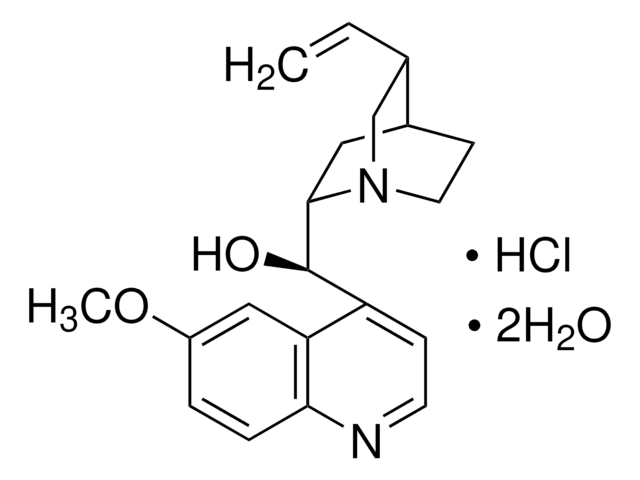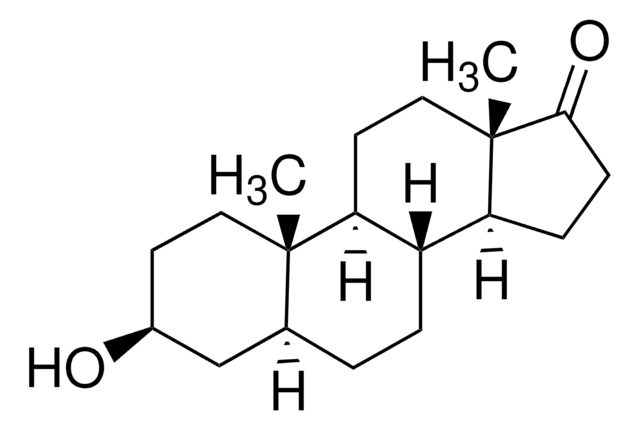22640
Quinine hemisulfate salt monohydrate
BioReagent, suitable for fluorescence, 99.0-101.0%
Synonym(s):
Quinine sulfate (2:1) (salt) dihydrate
About This Item
Recommended Products
product line
BioReagent
Assay
99.0-101.0%
mp
~225 °C (dec.) (lit.)
fluorescence
λex 347 nm; λem 448 nm in 0.5 M sulfuric acid
suitability
suitable for fluorescence
antibiotic activity spectrum
parasites
Mode of action
enzyme | inhibits
SMILES string
O.O.OS(O)(=O)=O.COc1ccc2nccc([C@@H](O)C3CC4CCN3C[C@@H]4C=C)c2c1.COc5ccc6nccc([C@@H](O)C7CC8CCN7C[C@@H]8C=C)c6c5
InChI
1S/2C20H24N2O2.H2O4S.2H2O/c2*1-3-13-12-22-9-7-14(13)10-19(22)20(23)16-6-8-21-18-5-4-15(24-2)11-17(16)18;1-5(2,3)4;;/h2*3-6,8,11,13-14,19-20,23H,1,7,9-10,12H2,2H3;(H2,1,2,3,4);2*1H2/t2*13-,14-,19-,20+;;;/m00.../s1
InChI key
ZHNFLHYOFXQIOW-LPYZJUEESA-N
Looking for similar products? Visit Product Comparison Guide
General description
Application
Biochem/physiol Actions
Signal Word
Warning
Hazard Statements
Precautionary Statements
Hazard Classifications
Eye Irrit. 2 - Skin Irrit. 2 - STOT SE 3
Target Organs
Respiratory system
Storage Class Code
11 - Combustible Solids
WGK
WGK 3
Flash Point(F)
Not applicable
Flash Point(C)
Not applicable
Personal Protective Equipment
Certificates of Analysis (COA)
Search for Certificates of Analysis (COA) by entering the products Lot/Batch Number. Lot and Batch Numbers can be found on a product’s label following the words ‘Lot’ or ‘Batch’.
Already Own This Product?
Find documentation for the products that you have recently purchased in the Document Library.
Customers Also Viewed
Our team of scientists has experience in all areas of research including Life Science, Material Science, Chemical Synthesis, Chromatography, Analytical and many others.
Contact Technical Service